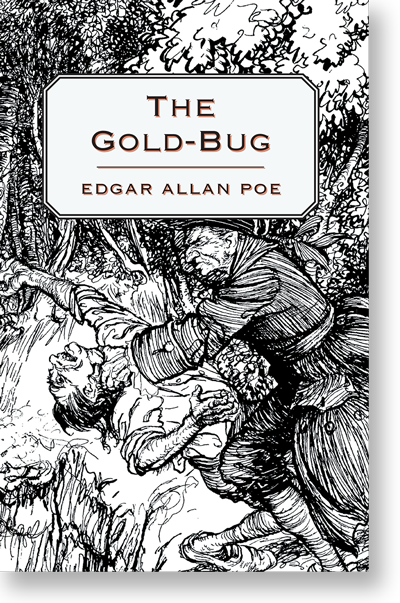The Gold-Bug
Edgar Allan Poe’s short story, The Gold-Bug was originally published in 1843.
An unnamed narrator is compelled to visit his friend who has been bitten by a golden bug. When he arrives at Sullivan’s Island, South Carolina, the narrator and his friend’s servant are drawn into a thrilling adventure that revolves around the deciphering of a secret code and the hunt for the treasure that it leads to.
Edgar Allan Poe (1809-1849) was an American author, editor, poet, and critic. Most famous for his stories of mystery and horror, he was one of the first American short story writers, and is widely considered to be the inventor of the detective fiction genre.
We are republishing this vintage text, The Gold-Bug, in an affordable, high-quality edition complete with a specially commissioned new biography of the author.
Extract from Edgar Allan Poe’s The Gold-Bug:
“Dey aint no tin in him, Massa Will, I keep a tellin on you,” here interrupted Jupiter; “de bug is a goole bug, solid, ebery bit of him, inside and all, sep him wing –neber feel half so hebby a bug in my life.”
“Well, suppose it is, Jup,” replied Legrand, somewhat more earnestly, it seemed to me, than the case demanded, “is that any reason for your letting the birds burn? The color” –here he turned to me –“is really almost enough to warrant Jupiter’s idea. You never saw a more brilliant metallic lustre than the scales emit –but of this you cannot judge till tomorrow. In the mean time I can give you some idea of the shape.” Saying this, he seated himself at a small table, on which were a pen and ink, but no paper. He looked for some in a drawer, but found none.
***
Here, at edgarallanpoe.co.uk, you can find the best of this fantastic author’s novels, short stories, essays, and poems.
You can also find a biography of Edgar Allan Poe, along with some of his most famous quotes and loved poems.
Through republishing works such as ‘The Gold-Bug’, it is hoped that the writing of this author of mystery and the macabre, can continue to delight – almost two centuries after its initial publication.
